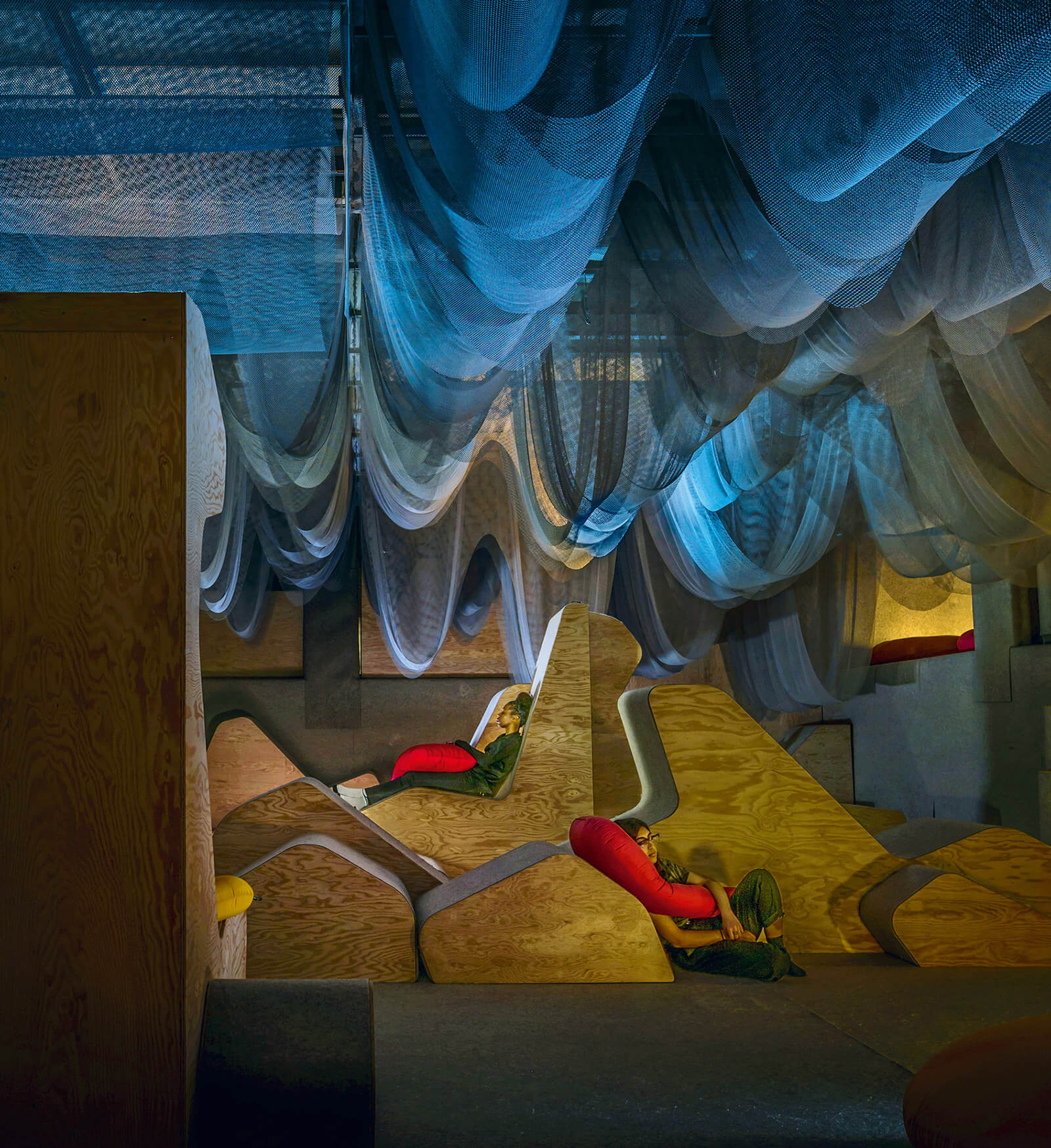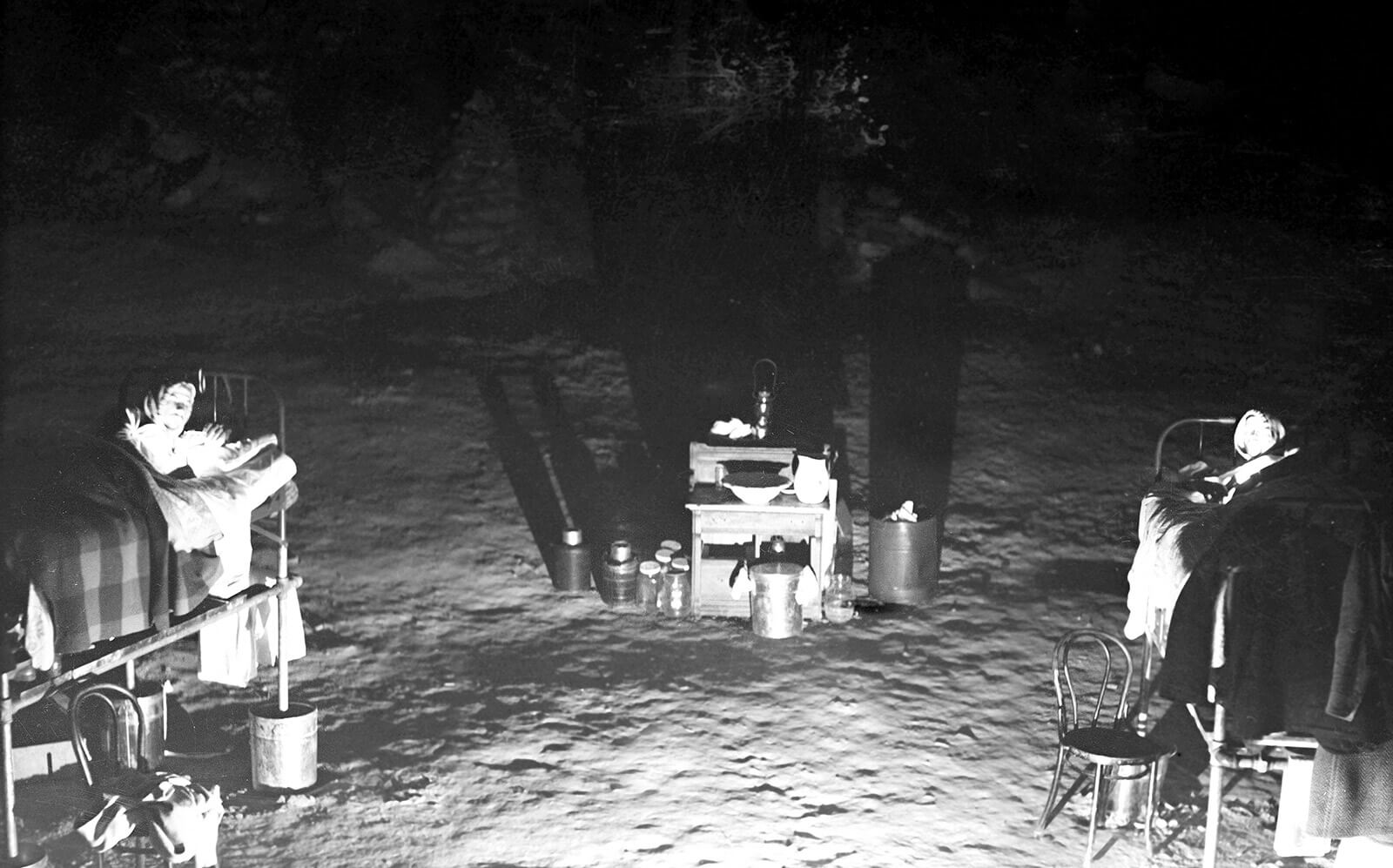Glossary of Dream Architecture
Genus for a new circadia
Natalie Fizer and Richard Sommer
What is the material substrate of dreams, and how does it inform the architectural imagination? The following are extracts from a glossary that guided the creation of “New Circadia: Adventures in Mental Spelunking,” an experimental space for idling recently conceived and installed by Richard Sommer and Pillow Culture at the University of Toronto. (The full glossary is available here.) New Circadia was inspired by Dr. Nathaniel Kleitman’s 1938 Mammoth Cave Experiment (the first staging of a scientific laboratory to study human cycles of sleep and wakefulness) and the ancient Greek asklepion (a ritual health complex with a hidden sleep temple, the abaton). At New Circadia, visitors enter a subterranean space through an anteroom, don anatomically shaped spelunking gear, and proceed to a dark, multi-sensory space—a soft utopia—of collective adventure, relaxation, and reverie.

Our glossary gathers buildings, landscapes, events, films, stories, drawings, and other projects that can also be understood to constitute a makeshift history of dream design. The history the glossary imputes is provisional to our own purposes and guides our ideas about how architecture models time to shape a space of dreams through the measuring, marking, and bounding of various human practices. The dream-inducing architecture of New Circadia begins with a search for tempos within the various and overlapping versions of time we inhabit. These include, but are not limited to: geological/deep time, mechanical/industrial time, wasted/idling time, broken/discontinuous time, organic/biological time, and mythical/story time.
Acknowledging architecture’s complicity in an increasingly stressful and zombie-like world, how can we counter the overmechanization of everyday life? Idling, whether by sleeping, dreaming, napping, or meditating, is not lost, unproductive time, but, rather, is vital to our survival and evolution as a species.
We think it may be time to put architecture to sleep.
• • •

In 1938, Nathaniel Kleitman staged the first scientific research laboratory designed to study the circadian timekeeping of the body in sleep. He set his experiment in Mammoth Cave, Kentucky, one of the longest known cave systems on Earth and an established tourist site. While in many ways an unsuccessful experiment, Kleitman’s use of the cave as a laboratory for conducting a sleep/wake experiment introduced a dramatic narrative aspect through its suggestion that understanding the circadian rhythms of human consciousness requires a retreat into the primordial.